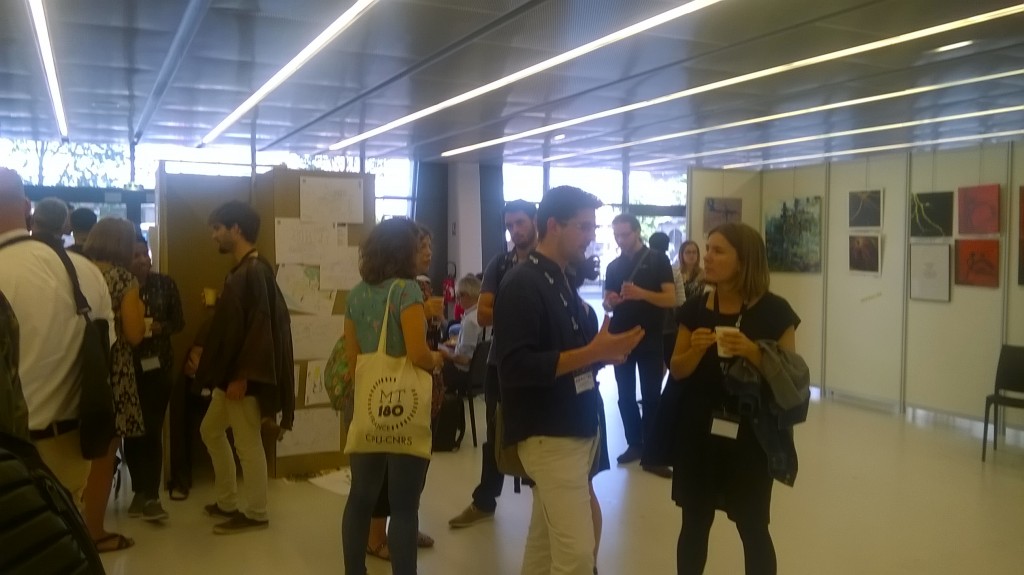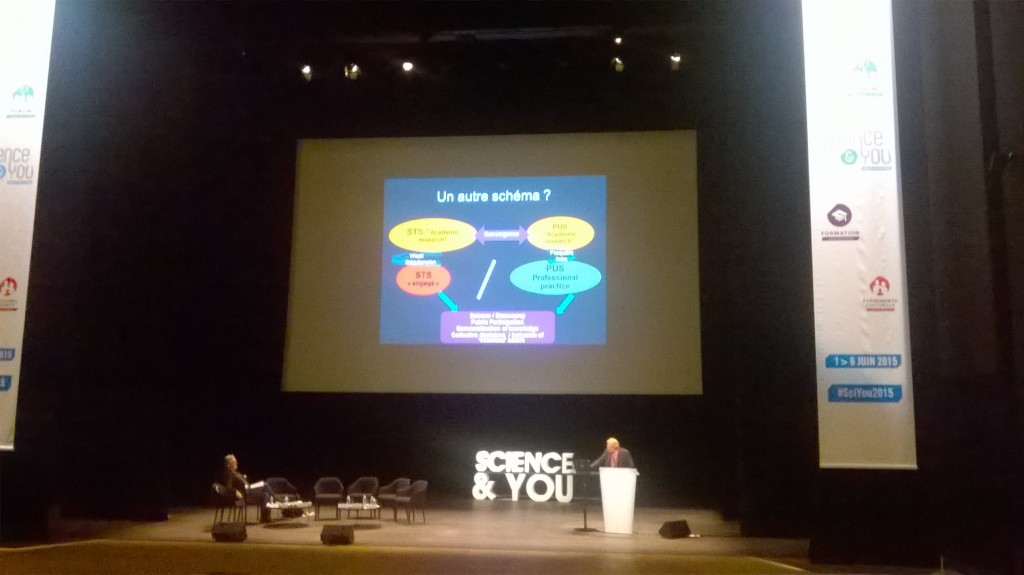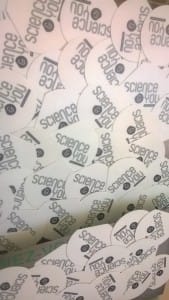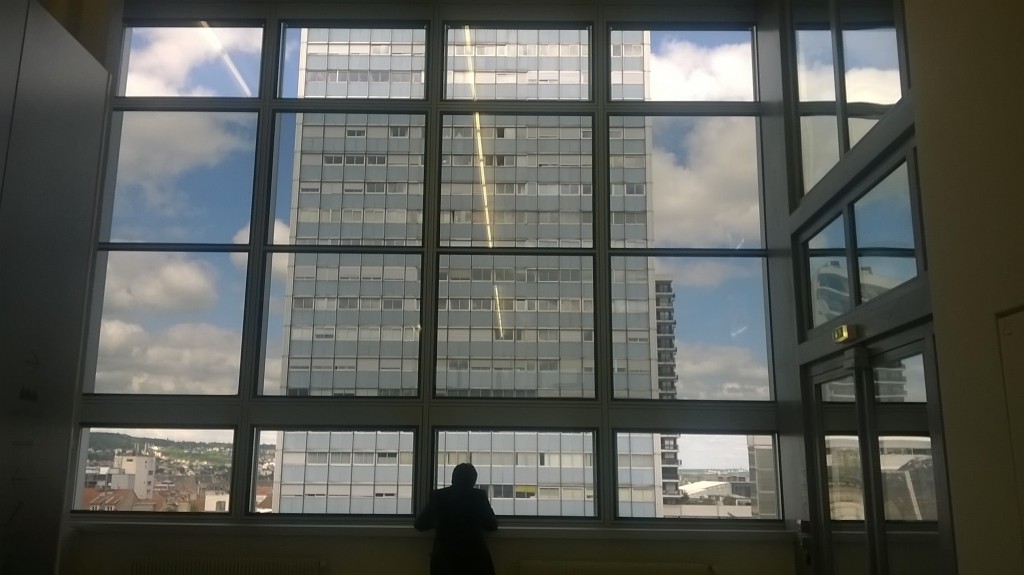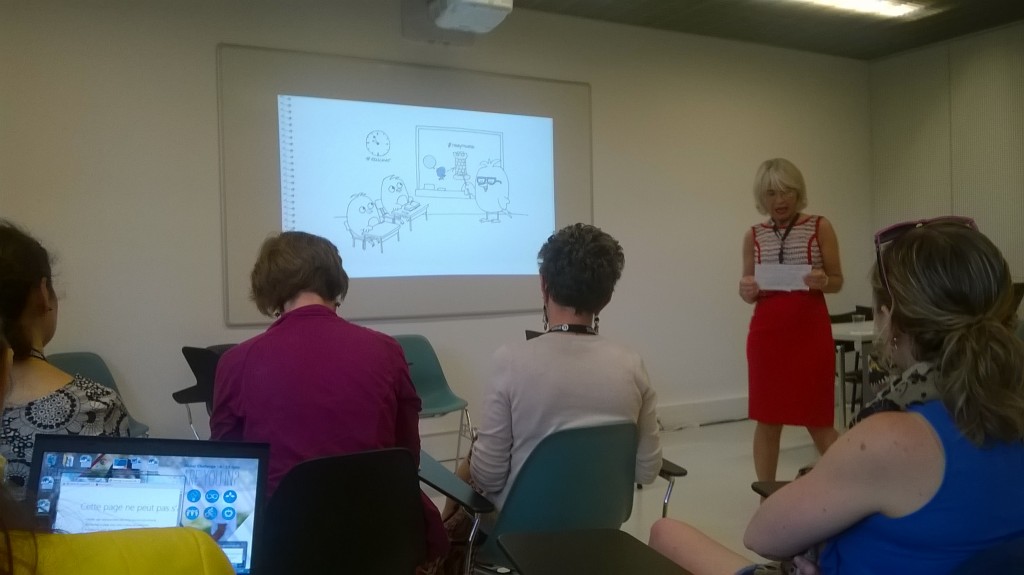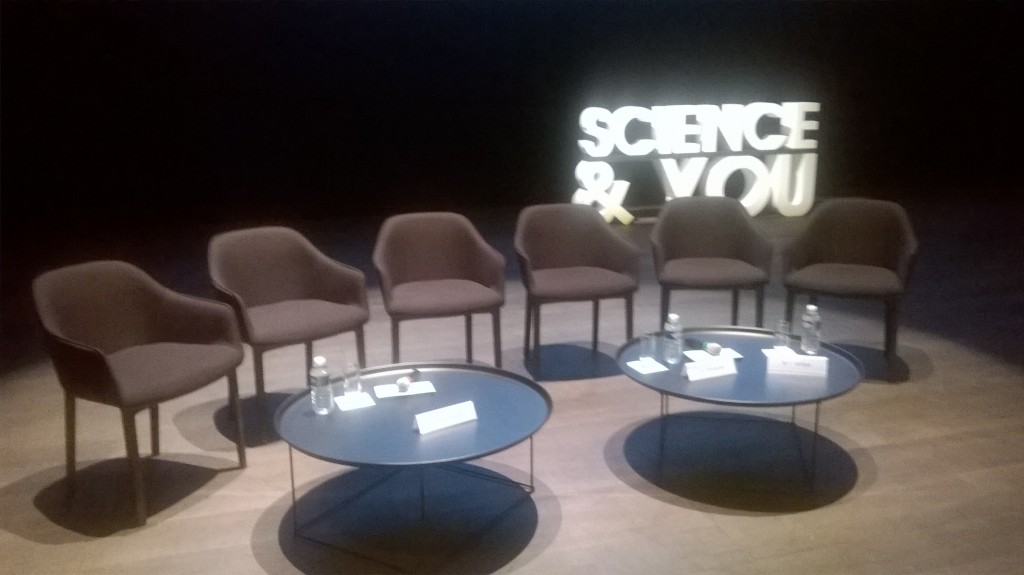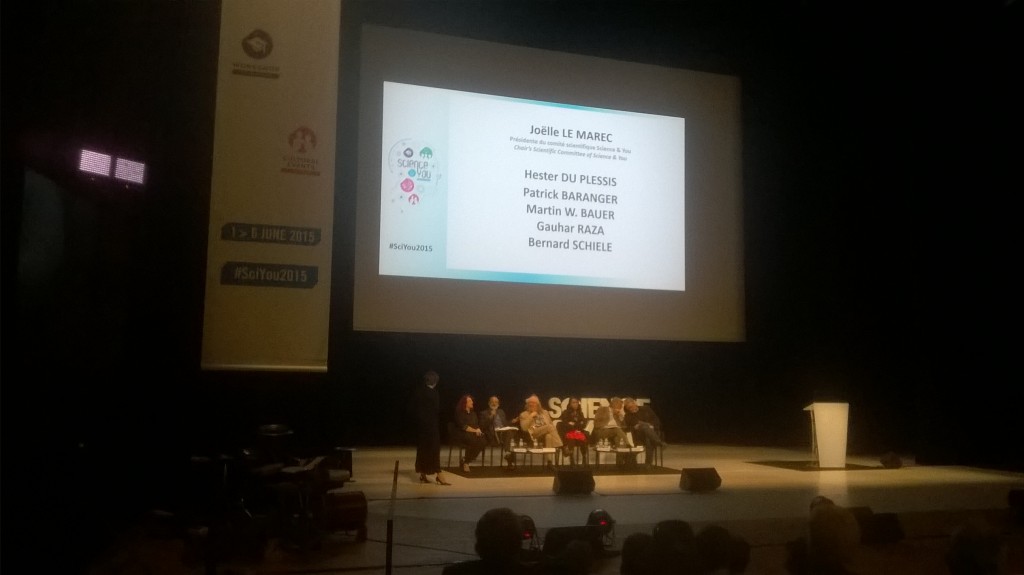Labcritics at Science & You 2015
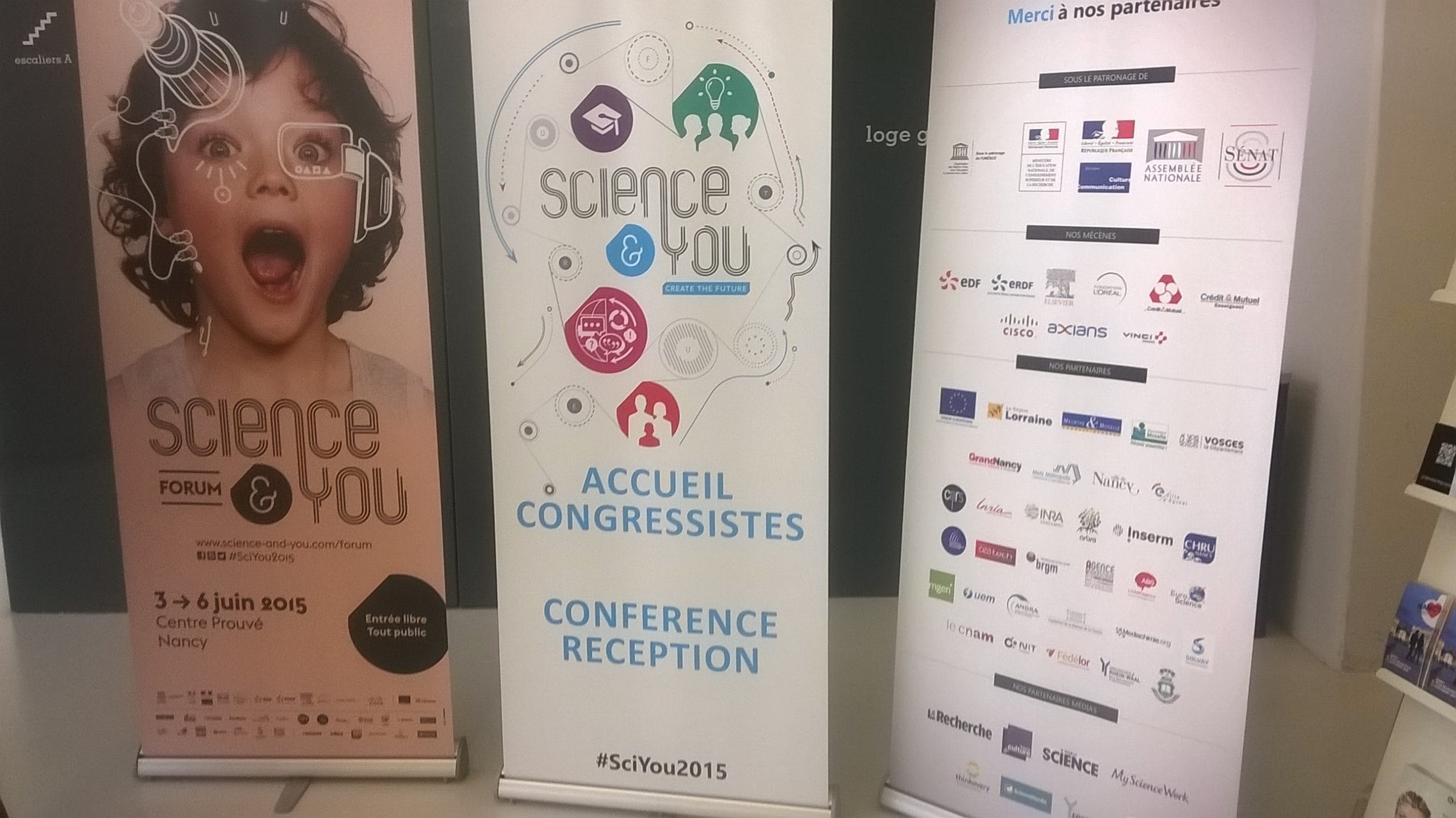
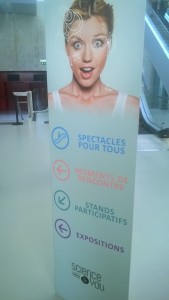 Labcritics was at Science & You 2015 in Nancy, France, a scientific communication event open to researchers, students, mediators and journalists. We enjoyed the high level of speakers and the vast offer of plenary conferences, workshop sessions and round table conferences. It was impossible to attend everything because of the overlapping schedules, as usual in this kind of events. We, however, want to transmit as best as we can how it was to be there and what we learned.
Labcritics was at Science & You 2015 in Nancy, France, a scientific communication event open to researchers, students, mediators and journalists. We enjoyed the high level of speakers and the vast offer of plenary conferences, workshop sessions and round table conferences. It was impossible to attend everything because of the overlapping schedules, as usual in this kind of events. We, however, want to transmit as best as we can how it was to be there and what we learned.
In the welcome address, Joelle Le Marec, President of the Scientific Committee and Professor of Information and Communication at University Paris 7, emphasized the need to recover spaces for scientific criticism and dialogue in the public arena. Increasing the people’s autonomy and capacity of debating science is crucial for the challenges of a deeply technological future. Authorities need to find ways to involve the public and amateurs to the scientific debate. Sharing this knowledge will avoid the continuation of powers of domination and exclusion and foster a democratic approach to scientific advances and the economic and social transformation that comes with them.
Science & You 2015 Plenary Conferences
The first plenary conference was a joint effort by Massimiano Bucchi –Professor of Science and Technology in Society at the University of Trento- and Brian Trench –Independent researcher, evaluator and trainer in science communication. They presented an overview of their research on science communication patterns and trends over the past 50 years. Seminal works on science communication analysis have increased steadily every decade, and the rate of publication has accelerated. This is especially true in Europe and the US, although the increase is appreciated in other countries as well, even if to a smaller degree. The typical profile of the science communication researcher is a male in his 40s with a Social Sciences (up to the mid 90s) or Communication Studies (since the mid 90s) background. In the last 20 years there has been an increase in the number of research works on communicating biology, physics and environmental sciences. They identified four main sections of study: models and theory, publications for science, processes and media representation of science. Bucchi and Trench foresee a future in science communication where there is a fragmentation of public, actors and media, and they argue that there is an unfulfilled need for the true implantation of science in culture, what they say to be better understand in the French expression ‘la mise en culture de la science’.
Alan Irwin, Dean of Research at Copenhaguen Business School, presented in his plenary conference the concepts Citizen Science and Scientific Citizenship. He referred to the descriptions of Citizen Science by Chris Filardi (mutual construction of questions by scientists and society) and Amy Robinson (collective intelligence to solve scientific problems). He identified 4 levels of citizen participation in science. First: crowdsourcing, where citizens act as sensors; Second: distributed intelligence, where citizens act as basic interpreters; Third: participatory, where citizens participate in problem definition and data collection; Fourth: extreme collaborative science, where citizens participate in problem definition and data collection and analysis. According to Irwin, citizen science is defined as the point where public participation and knowledge production meet, and scientific citizenship is characterized by: the interaction between scientists, science, technology and innovation; asking questions about the relationship between knowledge and democracy; the focus on socio-technological futures; practiced engagement; cognitive justice.
Elizabeth Rasekoala, Chair of the Pan-African Solidarity Education Network, presented the most socially aware conference of the session. She stressed the need for a role of science and its communication in a global, sustainable development. She perceives several pressing issues in science communication than could be solved by: prioritizing gendered social and cultural dimensions to transform the Eurocentric and masculine bias; engaging afrocentricity; including indigenous knowledge systems; enhancing language diversity; integrating the effort by social and natural scientists; finding new ways to deliver science communication to maximize its impact.
Marc Lipinski –Doctor in Medicine and Biochemistry, Director of Research at the National Center for Scientific Research (CNRS, France) centered his conference in the participation of citizens in science. Amateurs where the driving force of science until the 19thcentury, but since then they have been progressively driven out. Now, they are back through crowdfunding and crowdsourcing initiatives. Laypeople-researcher cooperation should be encouraged; there is a mutual benefit: science advances faster and citizens feel empowered and satisfied. Dr. Lipinski presented several examples of amateur participation in scientific projects whose amount of data was too big to analyze with available resources. Many of these projects are presented in a competitive, gamified online fashion, like Fold It (a protein folding solving game), Eyewire (reconstruction of neurons) or EteRNA (RNA folding). Another examples of citizen collaboration in science are Tela Botanica, where amateur botanists participate by observing the evolution of local flora and fauna; HIV activists who pushed researchers to go back to the study of ‘out of fashion’ retroviruses; and science shops at universities that allow the access to scientific expertise, perform society focused research for non-profit organisations and mediate for research or educational projects within their network.
Pablo Kreimer, Director of the “Ciencia, Tecnologia y Sociedad” Center at Universidad Maimonides, Buenos Aires, centered his talk on the interaction between Public Understanding of Science (PUS) and Science and Technology Studies (STS). He situated the emergence of STS in the 1940s in the US, in a context of functionalism and protection of science from totalitarian intervention. Science had achieved autonomy, allowing free exchange among scientists, and from that autonomy emerged other two characteristics: accumulation and regulation. In the 1970s, Europe was dominated by constructivism and questioned the role of science as the only source of truth. Similarly, in Latin America there were tensions of development; science was either protected or questioned –as a means to exploitative capitalism. Science, thus, could be used for development of for revolution.
Kreimer proceeded to explain Martin Bauer’s theory of the evolution of PUS. The 1960s-1980s were years of science literacy, and it was widely thought that the public had a knowledge deficit in scientific issues. Around the second half of the 1980s the new paradigm was the public understanding of science, with an emphasis on understanding attitudes to scientific knowledge. In the 1990s, the period of science-in-and-of-society, the paradigm is a loss of trust of the S&T audience. PUS is on the fence between outreach and professional research on social science.
Kreimer later analyzed the STS congresses in Europe (EASST), Latin America (ESOCITE) and USA (4S) and detected a growth of PUS in STS congresses and an STS opening to other fields: art, design, cities, etc. He concluded that STS and PUS seem to have parallel structures (courses, congresses, journals) but predicted a greater degree of academic convergence that would shape a broader field.
Pierre-Benoit Joly, Research Director at the INRA and Director of LISIS, Paris, examined Science-Society relationship through the prism of Techno-Scientific promises. The problem seems to be people’s relation not so much to science as to its applications, which explains the resistance to new technologies. This opposition does not stem from lack of knowledge or perception bias, but from the feeling of exclusion from debate and decision about the technologically shaped future society.
Jean-Yves Le Deaut, Member of Parliament in the French National Assembly and President of the OPECST, talked about his 30 years in this Office that informs the Parliament about the consequences of its choices in scientific and technological fields. They shed light on technical aspects through consultation to the scientific community and missions abroad to explore avenues of research.
Aziz Bensalah, Professor at the National Centre for Scientific and Technical Research in Rabat, exposed the situation of PUS in Morocco. There is a mutual indifference between scientists and the public. There are no science festivals, a weak education system, lack of scientific offer. But Morocco is a land of opportunity for PUS, associations, practices, activities. Bensalah appealed to the state representatives, universities and the international community for taking the initiative on developing S&T, creating an S&T observatory, increasing research in STS and fostering science without borders.
Brian Wynne, Professor of Science Studies at Lancaster University, Dept. of Sociology, UK, noted that to be informed by science is also to be shaped (in-formed) by science. He criticized that PUS, as understanding of scientific knowledge, is mixed with normative messages, which undermines democracy. There are implicit and explicit, intended and unintended dimensions of communication, that can shape the audience. Issues are often presented as scientific, being in reality public issues involving science. Treating them as strictly scientific points to a hidden agenda of political interest. Having the ‘public deficit of understanding’ theory been discredited, it is understandable the public dissent about reduction of problems to science alone and being excluded from the decision process.
Workshop: Science Communication and Digital Technologies
Ajibola Omokanye is a medical doctor who realized that many of his patients understood him much better if he communicated with them with illustrations. He is the founder of Explainartist, a website that assists researchers and charities to engage with the public using visuals.
Gilbert Faure from CHU Nancy exposed the problem of Infobesity: the increase of data, shared knowledge and open access publications is making more and more difficult to find the relevant information. The solution comes from Open Knowledge Management (OKM): curation tools are appearing that select, detect, comment and diffuse information of interest for the curator and his fellows. An example is scoop.it, a curation tool for Science and Medicine.
Workshop: Surveys, Evaluations and Impacts of Science Communication
Elena Milani from University of Padova examined images for advocacy in communication of risk. She did a quantitative analysis on Pinterest to explore the recurring characteristics of the most shared anti-vaccine pictures. She found out a pervasive use of images that elicit a strong emotion and do not require previous knowledge to be understood.
Michelle Smith from Universite de Valenciennes et du Hainaut-Cambresis presented her analysis comparing the communication techniques employed by a science museum and a creationist museum. She found the general panel design and the use of figures to be very similar. However, while scientists presented facts in a rather aseptic way and no reference to creationism was made, creationists made a more dramatic, attractive and engaging presentation, also comparing every assumption to the scientific model, thus making easier to the public to leave with a supposedly well-funded criticism of the scientific model.
Milla Karvonen, from the University of Oulu, analyzed the audience of Finnish science communication events, and found out that most of them are highly educated people and already think positively about science, thus proposing to change the way to promote those events and not preach only to the converted.
Wisalinee Triyarat presented a Thai travelling science caravan and how it can engage children of remote regions with science. Moreover, it allowed to identify regional differences in education that could be used to improve the education curricula.
Workshop: Training Researchers for Science Communication
Adam Oliver Brown from University of Ottawa proposed making science communication an integral part of the undergraduate curriculum for science students. The current lack of training in that area makes science graduates unable to inform the general public on matters of science. He made a call to university professors to integrate elements of PUS into all levels of the curriculum for undergrads.
Sally Goodman presented Famelab, an international competition in science communication where candidates must present a scientific concept in three minutes respecting the 3Cs: content, clarity and charisma. The aim is to communicate science in an accessible and seductive way. Famelab helps young scientists to acquire the skills to communicate to non-specialists, and lay people understand better public funding of science.
Fanny Gascuel and Quentin Dumont from Doc’Up (Sorbonne University) presented the short film festival “Les chercheurs font leur cinema” where PhD students present their research in a five minutes film in a pedagogic and fun way. It helps them develop communication skills and popularizes research.
Workshop: Science Communication and Social Networks
Cristina Rigutto from INAF National Institute of Astrophysics, Observatory of Padova, explored the possibilities of Twitter for science outreach. This social network is changing the way people interact with scientists and how they acquire literacy. Museums and institutions use Twitter to attract, engage, entertain and inform. Space agencies and deep sea explorers present their research in real time to engage people through the whole campaign. Rigutto also presented some tips on how to better compete for attention in the overcrowded digital milieu: wise use of the 140 characters, good use of figures, storytelling and twitter currency –selfies, cats and memes.
Isabelle Kling from EMBL, Heidelberg, presented the CommHERE project, the first EU-funded network of science communicators. Research is increasingly collaborative thanks to international consortia and funded projects. This imposes the need to network. CommHERE supports scientists in networking and encourages them in improving communication towards the general public. The most successful initiative has been the adaptable press release for communicating a collaborative publication. It consists of a common core and a variable part where each collaborator can enhance its own contribution. It also features adaptable logos and quotes. It is specially appreciated by small research institutes. CommHERE also proposed common outreach events that highlight the science and not the individual research institutions. These proved to be informative and highly popular, even if challenging to organize.
Thomas Durand presented La Tronche en Biais, an online initiative to introduce people to Zetetics –the art of doubting. Humans have a strong cognitive bias fueled by essentialism, confirmation bias, perception bias, existential anguish, etc. All these are sources of error for an objective knowledge of nature and lead to people objecting to the “official” science and believing in unfounded disciplines such as homeopathy, anti-vaccination, acupuncture, extraterrestrial life on earth and many others. Internet can be a valuable source for contrasting views and information but people tend to look for sources that confirm their bias. Confronting people with facts that debunk their beliefs is usually not enough. La Tronche en Biais uses social networks to dialogue with people, encourage their skepticism and make them use the scientific method.
Round-Table conference: Science on Television
Gauhar Raza from the National Institute of Science, Technology and Development Studies in New Delhi and V.T. Viswanathan from Vigyan Prasar, New Delhi discussed about television as a mass medium to inform and shape audiences. They presented a brief history of television in India and talked about science on TV. They talked about the problem of science programs to find an audience in a country with 900 private channels filled with news, sports, comedy, films, religion and many other attractive contents. In their experience, one problem is the compartmentalization of science, and those compartments not communicating among them. This also means that there are no general experts in all sciences and complicates finding the right person for certain debates. Another problem, quite pointed out through the whole meeting, is that scientists are not good communicating to general audiences: they are usually not trained for that, they are camera-shy, their language is jargonized, their skeptical nature makes them cautious and thus inadequate for the hype and attention sought on TV. The message receptor and mediator are the other side of the problem: audiences are not used to the repetitive nature of research, or to the long times needed to understand natural phenomena and enjoy them, and TV stations are aware of the high competition and the time constraints of TV dynamics.
Nancy Declaration 2015
The organizers of Science & You 2015 wrote a declaration that noted recent and historical events challenging, distorting, manipulating, pressing or interfering with the propagation of scientific ideas, where communicators and scientists have sometimes faced violence and even death. States, corporations, fundamentalists and other non-democratic forces are the main threats to the freedom of scientific communication. The authors resolved to pay homage to the victims in the service of science and urged governments to create a congenial and secure environment for tolerant exchange of ideas, to record all violent incidents against individuals or organizations propagating science and to resist those inhibitory forces. A debate was open to discuss the declaration and the authors of the declaration were severely criticized. Members of the audience and speakers found the text fundamentalist, west-centered, exclusive, biased and not reflecting the truth or taking own responsibility in the problem. The original draft was released to the press before discussion, which angered many attendees. The document can be read here.

